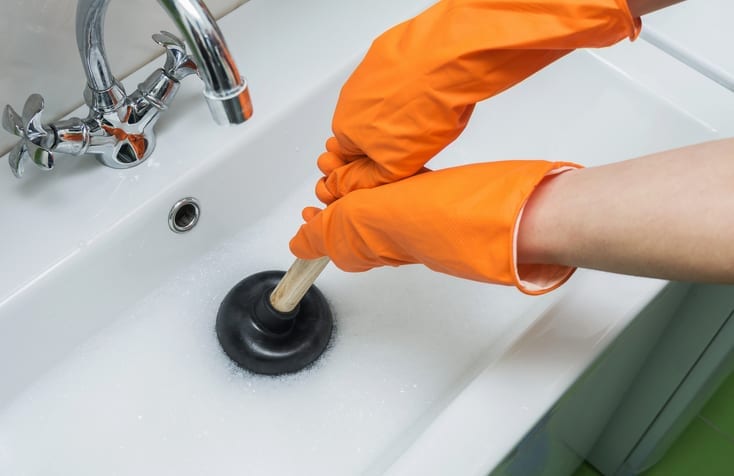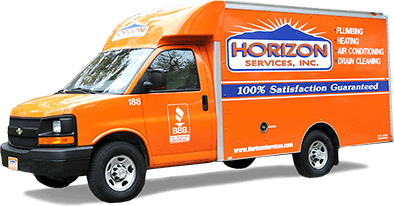
Before You Call a Plumber or Drain Cleaning Specialist… Here’s How to Use a Plunger!
You have a bad day at work. You get stuck in traffic for hours. You have a pounding headache. And there’s nothing to eat for dinner but leftovers. How can a day this bad get worse? Easy. You flush the toilet or pull the plug on a sink or tub…and the water goes nowhere.
You’re upset. You need to take out your frustrations. But you also need to get rid of what’s clogging up your drain…or else you’re really going to be upset. If you’ve got a plunger handy, you can kill both birds with one stone! But before you start plunging and lunging like a lunatic, make sure you have your ducks in a row and follow these simple rules on how to use a plunger.
General Plunger Tips:
- Make Sure You Use the Proper Plunger for the Job. All plungers are not created equal. There are basically two types — the cup plunger and the flange plunger. The classic cup type — probably the most familiar — is best for sinks, bathtubs and showers. The flange type has an extended rubber lip that provides a better seal for toilets.
- Keep The Plunger in Good Repair. Any tears of the cup or bell (the rubber part of the plunger) will result in a poor vacuum seal and loss of pressure. Plungers should be kept clean and dry when not in use to prevent cracking or ripping.
- Never Use a Plunger in Tandem with Drain Cleaning Chemicals. The plunging action will inevitably splatter dangerous chemicals onto your skin or clothing. Chemicals should only be used if a plunger fails to do the job.
- Remove Excess Water. Too much water in the tub, sink or toilet will make a mess when you start plunging. Use a bucket or siphon to remove water to the half-way point. But don’t entirely remove the water; if there’s no water, the cup won’t be able to form a vacuum seal and generate any pressure. There should always be enough water to submerge the cup. If there’s not enough water, fill a bucket from another source and add.
- Let Air Out of the Plunger Cup. A common mistake is to leave too much air in the plunger cup. Air, unlike water is compressible. If the cup is filled with air, it will compress every time you press down and act like a shock absorber. As a result, the clog won’t receive as much force. If the cup is filled with water, the force will be much more intense. Make sure you “burp” out the air from the cup and fill with as much water as you can before plunging.
- Get a Real Tight Seal. An easy way to improve the seal around the plunger is to add some petroleum jelly to the rim of the bell or cup. This will increase the suction. It will also prevent drying and cracking.
- Block All Other Outlets. If there is another sink or water fixture nearby, you’ll get better results if you block these drains before you start plunging. Get a wet cloth and stuff into these drains.
- Plunge with a Vertical Up-and-Down Action. Keeping the plunger handle straight and vertical, perpendicular with the base of the toilet, tub or sink is the best way to use a plunger. If you tilt at an angle, you won’t get proper force and the plunger seal can come loose.
Read More: Do Flushable Wipes Clog Toilets and Pipes?
How To Plunge a Clogged Sink, Tub or Shower:
- Use a STANDARD Cup Plunger.
- Securely Cover and Seal the Overflow Drain with a Wet Rag or Cloth.
- Submerge the Plunger Cup. Place the plunger over the drain and completely cover the drain opening.
- Push Down With Quick, Forceful Thrusts. This will concentrate pressure down the drain toward the obstruction. Repeat for 15-20 seconds.
How To Plunge a Clogged Toilet:
- Use the FLANGE type of plunger.
- If the bowl is full, put on some gloves and bail out until it is only half-full. If the bowl is empty, add water until it is half-full.
- Drape a towel over and around the toilet to catch any back-splash.
- Place the plunger in the bowl and completely cover the drain opening.
- Push Down With Quick, Forceful Thrusts. This will concentrate pressure down the drain toward the obstruction. Repeat for 15-20 seconds.
After Your First Attempt:
- Remove the Plunger and Examine the Drain. If the water drains out of the toilet, sink, tub or shower, you have successfully removed the clog. If the water is still not moving, repeat the plunging motion; some stubborn obstructions like paper, hair and food debris may require several attempts to loosen and dislodge.
Horizon How-To Use a Plunger Video
In this Horizon How-To video we show you how to identify the 3 primary types of residential plungers and provide insight on which type you should use depending on your plumbing problem.
What if Plunging Fails to Unclog the Clog?
If plunging doesn’t remove the obstruction, you need to pursue more aggressive measures. While there are commercially available chemical drain cleaners and snake devices which can be quite effective at loosening the most stubborn of clogs, homeowners use these techniques at their own risk. Chemicals can burn and damage skin, clothing, pipes and surfaces. Snakes and other mechanical devices can actually compress and enlodge the obstruction more if used improperly.
Your best bet for plunger-resistant clogs is to call an experienced plumbing and drain cleaning professional who can quickly and safely remove the obstruction and get you back in the flow. Our team of emergency plumbers in Elkton, MD and other areas offer dependable drain cleaning services for homes. Our team has the tools necessary to unclog your sink, tub, or toilet. Give our team a call at 1-800-642-4419 to receive help with a clogged drain in your house.


